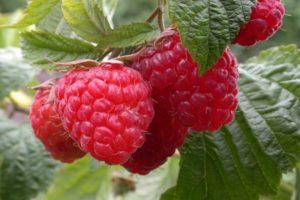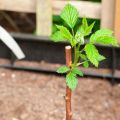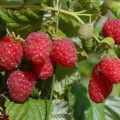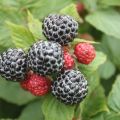Description of raspberry varieties Red Guard, advantages and disadvantages, care
Recently, the owners of garden plots prefer to grow remontant varieties, which tend to bear fruit on the shoots of the current year, as well as to present tasty and healthy berries for a long time. One of these varieties is the Red Guard raspberry. We will talk further about the features of the berry, as well as how to properly plant and care for the variety.
Description and characteristics of the raspberry Red Guard
It is advisable to begin the description of this variety directly with the berries. So, the first thing they pay attention to is taste and color, and they do not leave you indifferent. Each berry weighs about 12 grams and tastes excellent. Some gardeners have managed to grow raspberries weighing 18 grams.
Repaired raspberries The Red Guard is characterized by powerful bushes. Young shoots are located close and compact to each other, from the side it seems that they all come out of one point. By the way, this fact simplifies the care of the culture. Plant height reaches 160 centimeters.
Raspberries begin to bloom from the fifteenth of July, and by the end of the month the first harvest of berries is harvested. The culture bears fruit before frost. In one season, with proper care of raspberries, it is possible to collect at least 9 kilograms from one bush.
Pros and cons
Comparing Red Guard raspberries with other remontant varieties, it is worth noting several advantages:
- Raspberries begin to bear fruit much earlier than others, and the berries have an excellent taste. All fruits are of the same size, which cannot but increase the commercial characteristics of this variety.
- Some berries grow together, resulting in double-sized fruits.
- The plant is resistant to diseases and is highly frost-resistant.
- The culture is highly reproductive.
The variety is considered elite, so it is devoid of many of the disadvantages that others have. Nevertheless, in order to get a decent harvest, the owner of a garden plot must comply with all agricultural requirements when growing raspberries.

Growing specifics
The specifics of growing raspberries depends on the characteristics of the plant. We will describe in more detail how to properly organize the landing below.
Seat selection
The soil plays an important role in the cultivation of Red Guard raspberries, in particular, its composition. So, the land for planting should be loose and contain a sufficient amount of humus.Also, special attention should be paid to the location of the site.
The cultivar requires adequate lighting. There should be no high groundwater in the planting area. The place must be protected from the wind.
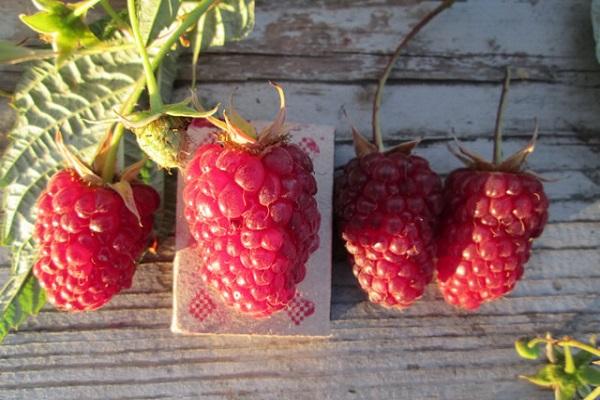
Landing pit
When the landing site is determined, it is necessary to draw the markings. Between the rows they leave at least one and a half meters, and between the bushes - half a meter.
Next, they begin to prepare the landing pits. The easiest way is to plant raspberry seedlings in trenches. The depth of the trenches should be at least 45 centimeters.
Soil preparation
The next step is to prepare the soil. This point also requires attention, especially if the land on the site does not meet the requirements of this type. Depending on what kind of soil is available, it is necessary to draw conclusions, what exactly is lacking in it, and take measures to replace or improve.
The main task is to make the soil structure loose and provide the required amount of trace elements.
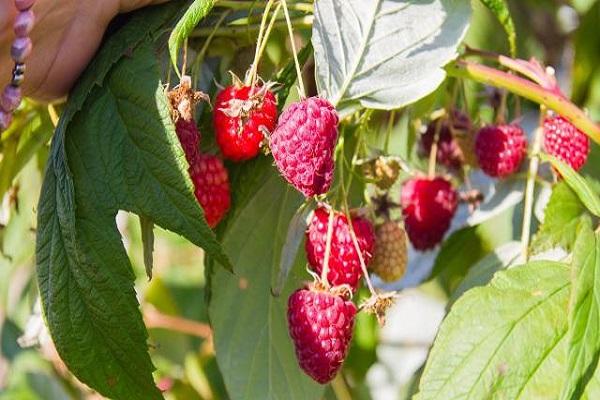
Filling the planting trench
It is useful to compact the planting holes or trenches when planting bushes, which will ensure the flow of the required amount of moisture to the plant roots.
Landing in the ground
Planting raspberries in the ground does not cause problems and consists of the following steps:
- A hole is prepared in the soil, whose size would correspond to the size of the root system of the seedling.
- The hole is watered, the soil is compacted.
- The seedling is released into the hole and covered with soil.
- The plant is watered.
- The earth is filled up.
- Mulch.

How to care for the Red Guard raspberry variety?
If the planting took place according to all the rules, and the deadlines are met, you can be sure that at the end of the season there will be a rich harvest in the beds. So, competent care of the variety is another prerequisite in order to get a good berry.
Watering and mulching
If raspberries are planted under mulch, they hardly require watering. Water is needed in cases where the weather is dry.
Experienced gardeners recommend using drip irrigation. The best option would be to lay an old hose, on which small punctures are made, and start up a weak water pressure. The hose is left next to the raspberry bushes for about 1-2 hours.
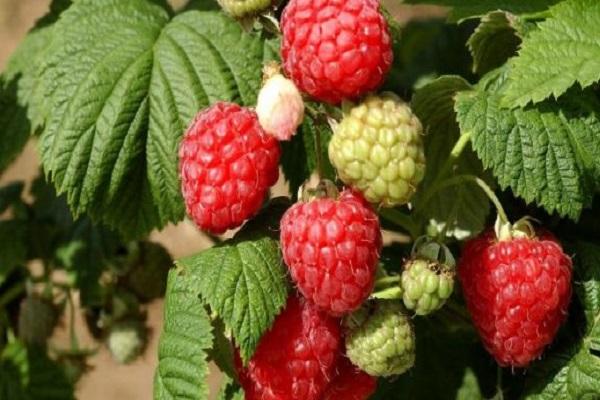
Garter
For growth and proper development, the plant needs a garter. Since the bushes are quite powerful and tall, the chosen support must also be reliable. Raspberries, planted in trenches, need a trellis garter. The trellis, as a rule, is stretched over the pillars located along the edges of the row.
Loosening
As for loosening the culture, this must be done carefully, since the raspberry root system is close to the soil surface.
Top dressing
Feeding raspberries is carried out in the following way: 2 tablespoons of urea, half a glass of ash is diluted in 10 liters of water. The resulting nutrient solution must be watered the plants. After such feeding, it is recommended to intensively water the crop to prevent root burns.
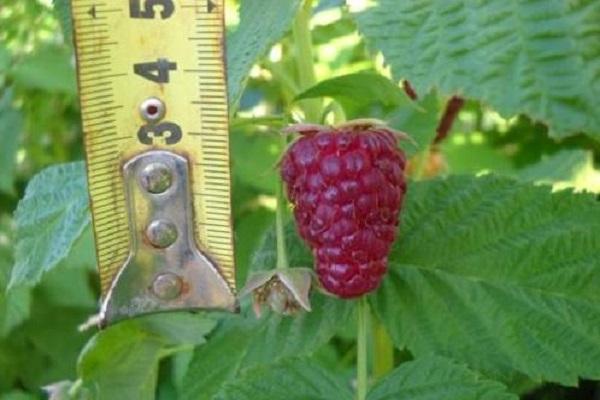
Topping
If we talk about traditional raspberry varieties, it is worth noting that the berries appear on last year's stems, so they are cut out as soon as the harvest has taken place, so that no hemp remains. This will be the starting point for strong young shoots to begin to develop, which will lay the foundation for future crops.
As for the remaining young stems, pinch the top in order to accelerate their maturation.
In addition, it is imperative to systematically thin out the planting, getting rid of the undergrowth, which is characterized by poor development and only thickens the raspberry tree.
Preparing for winter
Raspberry Red Guard belongs to frost-resistant varieties that do not need to be prepared for winter. Experienced owners of garden plots recommend tying the highest shoots of the bushes into bundles so that they are not damaged under the pressure of snow.Despite the fact that in the spring the shoots are cut at the same level with the ground, their damage reduces the yield of raspberries in general.
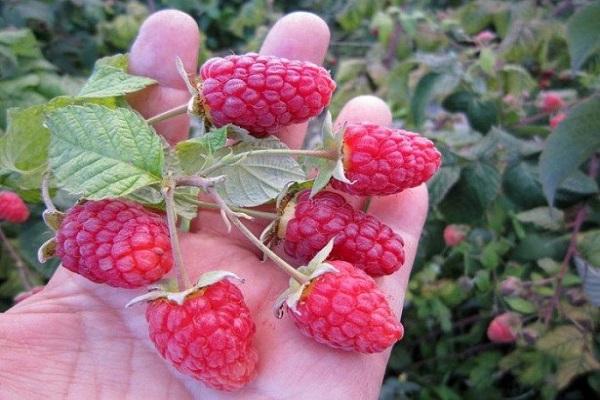
Fight against diseases and pests
Regardless of which variety the raspberry belongs to, care measures necessarily include preventive measures or directly combat diseases and pests.
So, the main enemies of berries are: raspberry beetle, stem fly and spider mite. As a preventive measure against raspberry parasites, they practice deep digging of the soil in the autumn, while removing plant residues, and in the spring the bushes are covered with agrofibre.
As for fungal diseases, they use spraying of bushes using Bordeaux liquid and Nitrofen solutions to combat them.
If the bushes are affected by viral diseases, for example, root cancer, mosaic or curl, the plant must be removed and burned.

Breeding raspberries
Raspberries of this variety are characterized by a high ability to reproduce successfully. So, one plant is capable of providing up to 20 root shoots in one season. If in the future it is planned that some of the offspring will go for further transplantation, it is necessary to eliminate weak shoots and leave the future seedlings to develop so that the distance between them is at least 10-15 centimeters.
At the time of transplanting, the seedlings are necessarily cut off and planted to the depth of the previous occurrence. To make acclimatization as easy as possible, after watering, the soil is mulched with compost, which is applied in a rather thick layer.

Cleaning and storage
The best time to harvest raspberries is early morning when the berries are still cool. It is also better if there is no moisture on the surface of the fruit (rain or dew), because this affects the storage duration, and also worsens the quality of the berries.
Only ripe fruits are subject to collection, which are easy to distinguish by color, and they are also separated from the fruit without problems. The berry is taken with three fingers and removed from the fruit tree by twisting it a little. This process requires the utmost care and accuracy, as raspberries are easily damaged.
Raspberries are stored for several days, at temperatures from 0 degrees to +2. If the crop was harvested in dry and cool weather, it is stored for up to a week.

